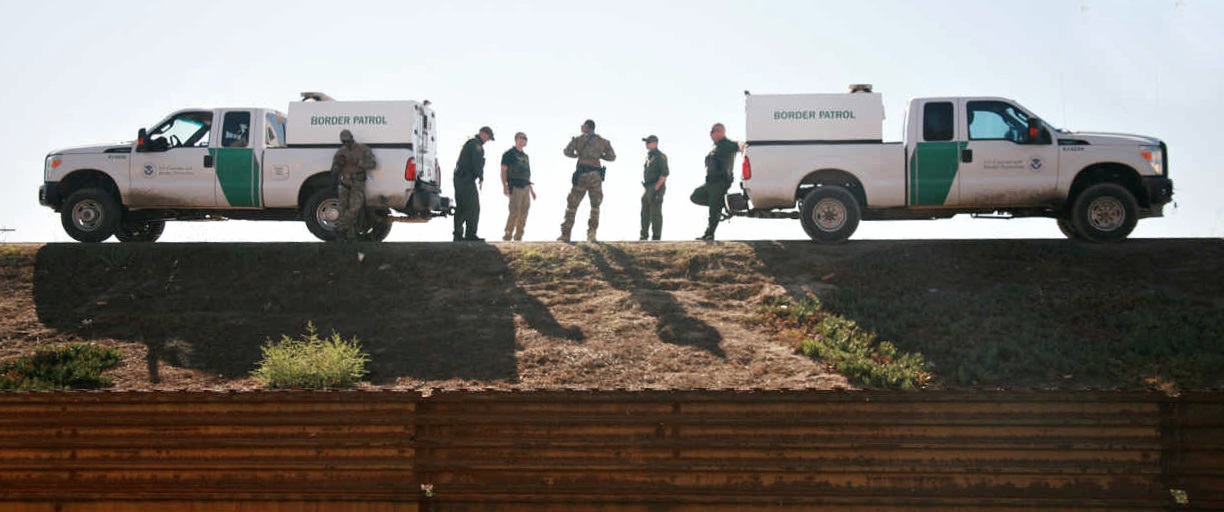Data released by U.S. Customs and Border Protection (CBP) shows that the number of individuals apprehended by the Border Patrol at the U.S.-Mexico border fell by 15% from September to October, with the agency reporting nearly 27,000 fewer apprehensions than the previous month.
October marks the third straight month of falling apprehensions, following a peak in July 2021. However, overall apprehensions remain historically high, and thousands of asylum seekers are still trapped in Mexico without any chance to seek asylum here.
The number of apprehensions isn’t the only factor that’s changing. Which people make it to the U.S. border—whether apprehended or not—has also changed, in large part due to Mexico’s shifting policies on migrants.
Border Sees Big Drop in Families, Small Drop in Single Adults
In addition to an overall drop in apprehensions, the number of asylum-seeking families arriving at the border also fell by 33% last month, dropping from 62,577 in September to 41,487. The number of unaccompanied children encountered at the border also fell, dropping to 12,640, the lowest monthly total since February. However, the number of single adults only fell by 4%, and remained higher than August numbers.
Migration from the “Northern Triangle” countries of Honduras, Guatemala, and El Salvador continued to fall in October, while migration from Mexico increased slightly.
Given the decrease in families (who often cannot be expelled to Mexico due to restrictions imposed by the Mexican government), and the relatively flat number of single adults, the overall percent of people expelled under Title 42 last month increased dramatically. 58% of all encounters led to an expulsion and an additional 5% led to a deportation.
Last month also saw the lowest number of people directly released at the border since February. Just 10% of people (16,070) apprehended in October were offered humanitarian release, down from a peak of 60,564 in July. As fewer families come to the border, this has meant that the Biden administration can crack down harder on single adults and the rest.
However, early signs indicate that October’s numbers may have been a temporary lull, as daily border apprehensions of unaccompanied children have been slowly rising in recent weeks. The Border Patrol has also reported rising numbers of Venezuelans and other nationalities who are not generally subject to Title 42 because Mexico will not accept their expulsions and their home countries limit deportation flights.
Mexico’s Role in Border Patrol Numbers
October’s border numbers also offer a vivid example of the ways Mexican policy decisions continue to have an enormous impact on which migrants can make it to the U.S. border to seek asylum or a better life. This is best seen with the case of Ecuadorian nationals, a group which until recently could fly into Mexico without a visa.
From May through August, the Border Patrol recorded nearly 60,000 arrests of individuals from Ecuador who had crossed into the United States between ports of entry. Then on August 20, at the urging of the U.S. government, Mexico announced a 6-month suspension of visa-free entry for nationals of Ecuador, which took effect in early September.
The effect of suspending visas from Ecuador was dramatic. Apprehensions of Ecuadorians fell from 17,577 in August to just 743 in October—a 96% drop. In mid-October, reports revealed that Mexico is in talks with the United States to similarly halt visa-free entry for Brazilians and a similar suspension was floated for Venezuelans in November. Both groups have seen increasing numbers of people over the last few months flying to Mexico and then crossing into the United States to seek protection.
Mexico’s role as an interdiction state was also seen in the dramatic drop in apprehensions of Haitians at the border that occurred in October. In September, the Border Patrol recorded 17,594 apprehensions of Haitians. Nearly all apprehensions occurred in Del Rio, Texas, where the Biden administration expelled over 7,500 people back to Haiti. That number dropped by 95%, falling to just 901 apprehensions in October, as Mexico cracked down across the country.
No matter what Mexico does, it will be unable to stop all migrants from coming to the United States. And the Biden administration’s insistence that it needs to continue expelling migrants under Title 42 for public health reasons will eventually have to give way to the new reality of vaccinations and testing. The United States cannot deter its way out of rebuilding its humanitarian processing systems, nor cannot it rely on Mexico to fill in the gaps.
FILED UNDER: border patrol, Customs and Border Protection, U.S.-Mexico Border


